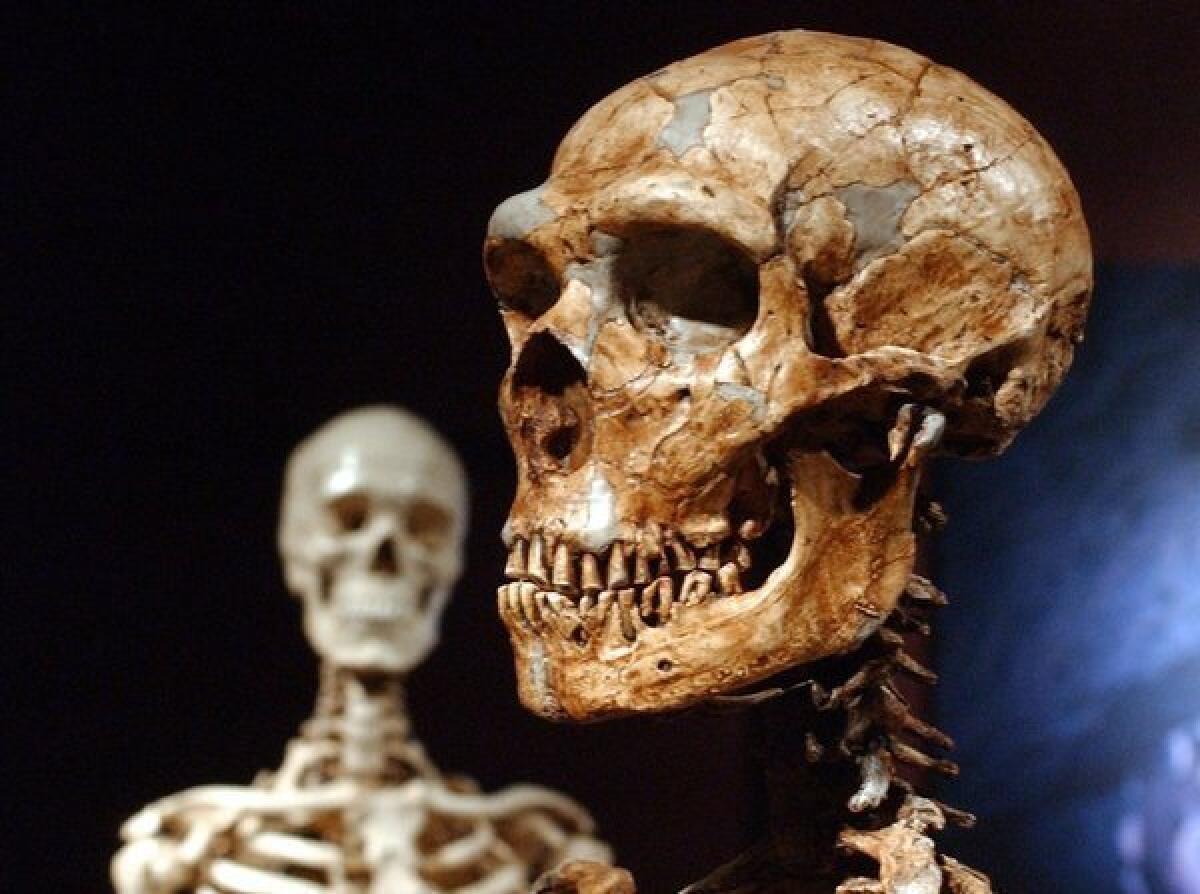Neanderthal DNA shows that man’s family tree is decidedly gnarled

Last week, newspapers reported on the latest wrinkle in one of my favorite recurring stories: the interbreeding between modern humans and the beetle-browed brutes known as Neanderthals.
The “introgression” of Neanderthal DNA into the genomes of modern humans apparently happened between 37,000 and 85,000 years ago, when modern humans whose ancestors had left Africa encountered the Neanderthals, remnants of a previous exodus. Last week’s news was that the residual Neanderthal DNA may have contributed some advantages, such as skin that could survive cold weather.
But I noticed something odd and revealing about some of the headlines on last week’s stories: They suggested that everyone reading the story had a bit of Neanderthal in his or her lineage. Thus the headline on the New York Times online story: “Neanderthals Leave Their Mark on Us.”
Us? As the story made clear, tiny amounts of Neanderthal DNA had been found in “Europeans and Asians” but not in sub-Saharan Africans whose ancestors stuck around when their cousins left the continent. I was reminded of the old Tonto/Lone Ranger joke: “What do you mean we, white man?”
(The Los Angeles Times headline was “Neanderthal genes helped modern humans evolve, studies suggest.” More accurate, though it would have been better to say “some modern humans.”)
I’m not saying the New York Times headline writer — and others who referred to people with Neanderthal DNA as “we” or “you” or “us” — were racist or captives to white privilege. But they were careless.
But stop the presses! It now appears that some sub-Saharan Africans do have Neanderthal-derived DNA nestled in their genomes. An article this week in New Scientist magazine reports that some members of Khoisan tribes in southern Africa turn out to have genes in common with southern Europeans.
Some of those genes may be traceable to modern Eurasians making whoopee with Neanderthals. Apparently some Eurasians migrated to eastern Africa 3,000 years ago, in what New Scientist calls “humanity’s unexpected U-turn.” Their descendants later migrated south.
This latest report doesn’t mean that all or even most sub-Saharan Africans have Neanderthal ancestry, nor does it alter the fact that humans can be roughly divided into geographical groups (or races, to use the politically incorrect term).
But clearly the human family tree is more gnarled and bushlike than was supposed only a few years ago. Modern humans apparently mated not only with Neanderthals but with another group of distant cousins, the mysterious Denisovans. And the various breeds of hominid got around, sometimes retracing the steps of their ancestors.
But back to the Neanderthals, who went extinct as a distinct species (or subspecies?) 30,000 years ago: It’s rather poignant that we — or a lot of us, anyway — carry around a bit of them in our cells, though thankfully not in our physiques.
ALSO:
Keystone XL, a sorry symbol of a continued reliance on fossil fuels
Boston Marathon bombings: The death penalty still isn’t appropriate
Time Warner’s mea culpa: $5 for missing Bruno Mars (and the game)
Follow Michael McGough on Twitter @MichaelMcGough3
More to Read
A cure for the common opinion
Get thought-provoking perspectives with our weekly newsletter.
You may occasionally receive promotional content from the Los Angeles Times.







